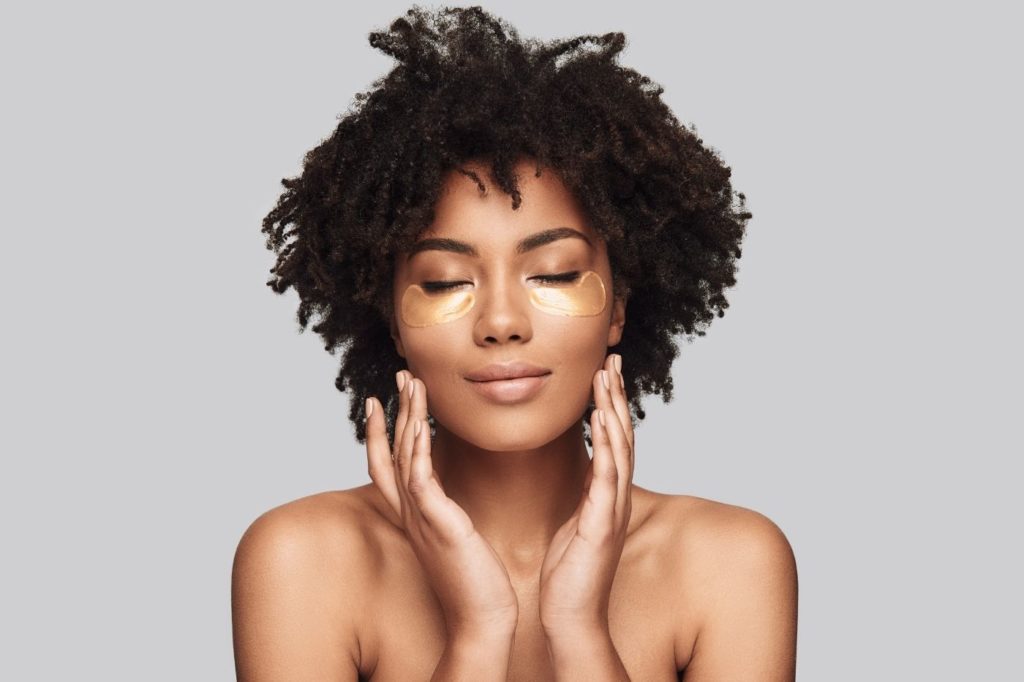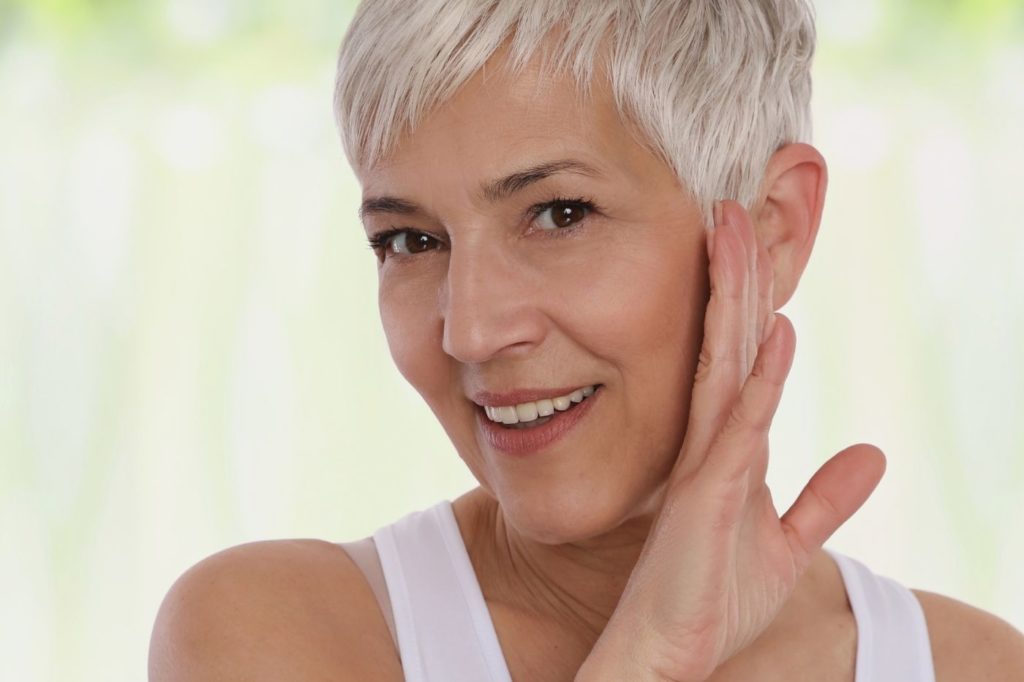
You’ve heard of cycling classes, recycling, and a laundry cycle… but did you know you have a skin cycle, too? Many women don’t know that understanding and working with their skin cycle is the key to fresh, youthful skin.
Together, we’ll unpack what a skin cycle is and how it changes over time. You’ll be surprised by simple things that can influence it, and most importantly, how you can care for it — using functional and holistic approaches, of course.
Here’s how to improve your skin cycle.
What is a skin cycle?
A skin cycle is the process by which the top layer of your skin regenerates over the course of 4-6 weeks (give or take a few, depending on your age). This starts in the deepest layer of your skin and occurs outward toward the surface of your epidermis.
Over the course of time, new skin cells are produced by the “basement membrane” of the skin. This sits on top of connective tissue, beneath the more visible layers of skin.
These skin cells (or keratinocytes) cycle their way to the top level of the epidermis over time, changing and maturing as they rise through the layers of the skin. The time from birth to death of a skin cell is known as a full skin cycle.
Eventually, on the skin’s surface, they become hardened, dead skin cells that we shed. Like each era of the Kardashian Christmas card, skin cells cycle through many stages before peeling away to reveal newer material.
Your skin cycles through new cells for your entire life, pushing them up through the layers of the skin. They develop and mature as they rise to the surface of the skin.
Does your skin replace itself every 35 days? Your skin does not replace itself exactly every 35 days. The cell turnover process slows as we get older and typically ranges from 14 days to 6 weeks.
And only the top layer of your skin, the epidermis, replaces itself. The next layer, the dermis, remains stable. This is why tattoos and scars don’t go away over time, even though we shed our skin constantly.

Skin Cycle Length By Age
How long does it take for skin to cycle? Many articles on skincare outline a 28-day cycle, but that certainly isn’t true for everyone. Similar to fine wine, those of us that are a bit more vintage take a bit longer for our skin cells to turn over.
How long does it take to shed all skin? Here is how long it takes to shed all of the top layer of the skin (epidermis), based on age:
- In our teens and early 20s, the skin cycle can last between 2-3 weeks.
- Toward our late 20s and in our 30s, skin cycle length increases to roughly 4 weeks.
- In our 40s and 50s, a skin cycle can take as long as 45-60 days.
- In our later 50s and beyond, a skin cycle can take as long as 90 days.
It’s common to see many patients with maturing skin try to overcompensate with excessive exfoliation, believing that scrubbing away old skin cells will solve the issue. However, in order to see the best results, you’ll need a more sophisticated method.
The Three Layers of Skin
There are 3 layers of skin, each one with its own unique characteristics:
- The subcutaneous fat, or bottom layer of skin, attaches the skin to the underlying connective tissue. You’ll also find more prominent blood vessels and nerve endings in this layer. This fat layer also insulates, controlling your body temperature and cushioning muscles and bones.
- The dermis, or middle layer of skin, is responsible for many of the visible and important functions of healthy skin. It holds sweat glands, small blood vessels that bring circulation to the skin, and the nerve endings that register touch. The oil glands in the dermis produce sebum that provides a hydrating protective barrier but can cause blemishes when overproduced.
- The epidermis, or outer layer of skin, is where new skin cells and melanin are produced. Your skin gets its color and appearance from the epidermis. When we apply skin care products, it takes time for them to affect deeper layers of the skin and for those layers to rise to the top. That’s why you may need to wait 4-6 weeks to tell if a new product is working.
What influences skin cycles?
There are many factors that affect the quality and pace of your skin cycle. Here are just a few of the top culprits:
Menstrual Cycle
The hormones of your menstrual cycle can affect your skin cycle — not just in breakouts, but also in the quality of your skin cells. Research has found that at peak levels of progesterone production, there is an increase in skin conditions like acne, psoriasis, eczema, and more.
Conversely, healthy levels of estrogen help with faster skin healing, better thickness, and water content.
Progesterone levels spike when you are ovulating, and estrogen levels are highest during the first half of your menstrual cycle. Irregular menstrual cycles or unbalanced hormones can affect the rate at which your skin cells grow and turn over.
Nutrition
What goes in, comes out — in the skin. Certain vitamins and nutrients like vitamins A and C, as well as fatty acids and healthy fats, are pivotal to building good-quality skin cells.
It’s important to include plenty of antioxidants and proteins in your diet, particularly as your body’s ability to fight free radicals decreases as you age.
As an additional note, hydration is another important key. Dehydrating your skin over time can accelerate aging and increase the appearance of fine lines and wrinkles.
Sun Exposure
Sun exposure can damage skin, lengthening the skin cycle. Ultraviolet rays from the sun or tanning beds can penetrate and damage the skin, depleting antioxidant levels, lessening the levels of collagen and elastin, and otherwise damaging skin cells.
The Skin Microbiome
Each of us has a unique balance of microorganisms on our skin like bacteria, fungi, and more, called a microbiome. The skin microbiome provides a protective barrier, boosts immunity, and produces chemicals, vitamins, and hormones that affect many systems in your body.
A healthier skin microbiome can improve skin health and support an optimal skin cycle.
Age
As discussed above, with age comes wisdom, but also a longer skin cycle. This means that it takes longer to see results in the skin with a new skincare routine. You may need help from moisturizers and chemical exfoliants (like hyaluronic acid) to see that fresh new skin with a slower cell turnover rate.
Sleep
Proper sleep helps balance hormones, rebuild collagen, repair UV damage, and increase skin circulation. It’s also a time to build new skin cells. Chronic lack of sleep can negatively affect your skin cycle and cause slower skin cell generation.
How to Care for Your Skin — On a Cycle
Can you change the length of your skin cycle? Yes, you can somewhat change the length of your skin cycle. While the length of our skin cycle grows as we age, it’s possible to still improve the rate at which new skin surfaces.
How can I make my skin regenerate healthily? Here are some ways to help your skin regenerate quickly and healthily.
- Limit your vices: Smoking and drinking can cause damage and prematurely age the skin, slowing your skin cycle length.
- Hydrate, hydrate, hydrate. Your water intake, as well as topical hydration, helps your skin maintain its elasticity.
- Eat nutritiously. Limit inflammation-causing foods like sugar, dairy, and gluten. Instead, eat leafy greens, veggies and fruits high in vitamins A and C, healthy fats like avocado, and foods high in omega-3s like chia seeds and salmon.
- Sunscreen. Protecting skin from UV damage can prevent signs of aging.
- Sleep 8 hours per night. Sleep gives your body time to restore and rebuild, and your skin is no exception.
- Work with your hormones. During a menstrual cycle, you’ll want to focus on hydrating and gently exfoliating during the first half of the month, while controlling oil and breakouts during the second half of your cycle. This will balance out the effects of fluctuating estrogen and progesterone levels.
Understanding and working with your skin cycle can be a great way to reveal better skin in the next 2-3 months.
Happy cycling!
Sources
- Lim, S., Shin, J., Cho, Y., & Kim, K. P. (2019). Dietary patterns associated with sebum content, skin hydration and pH, and their sex-dependent differences in healthy Korean adults. Nutrients, 11(3), 619. Full text: https://www.ncbi.nlm.nih.gov/pmc/articles/PMC6471406/
- Raghunath, R. S., Venables, Z. C., & Millington, G. W. M. (2015). The menstrual cycle and the skin. Clinical and experimental dermatology, 40(2), 111-115. Abstract: https://pubmed.ncbi.nlm.nih.gov/25683236/
- Berneburg, M., Plettenberg, H., & Krutmann, J. (2000). Photoaging of human skin. Photodermatology, Photoimmunology & Photomedicine: Review article, 16(6), 239-244. Abstract: https://pubmed.ncbi.nlm.nih.gov/11132125/
- Grice, E. A., & Segre, J. A. (2011). The skin microbiome. Nature reviews microbiology, 9(4), 244-253. Full text: https://www.ncbi.nlm.nih.gov/pmc/articles/PMC3535073/
- Chung, J. H., Hanft, V. N., & Kang, S. (2003). Aging and photoaging. Journal of the American Academy of Dermatology, 49(4), 690-697. Abstract: https://pubmed.ncbi.nlm.nih.gov/14512918/
- Rodan, K., Fields, K., Majewski, G., & Falla, T. (2016). Skincare bootcamp: the evolving role of skincare. Plastic and Reconstructive Surgery Global Open, 4(12 Suppl). Full text: https://www.ncbi.nlm.nih.gov/pmc/articles/PMC5172479/
- Schagen, S. K., Zampeli, V. A., Makrantonaki, E., & Zouboulis, C. C. (2012). Discovering the link between nutrition and skin aging. Dermato-endocrinology, 4(3), 298-307. Full text: https://www.ncbi.nlm.nih.gov/pmc/articles/PMC3583891/


